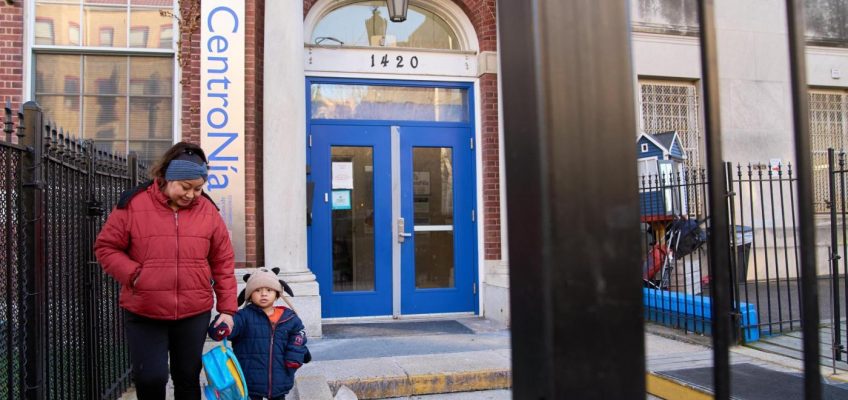Former Congressman and felon Steve Stockman, a Friendswood-area conservative who was convicted of 23 federal corruption charges and sentenced to 10 years in prison back in 2018, has declared himself rehabilitated and fit to run again for the U.S. House of Representatives.
This week, Stockman, once dubbed Texas’ “weirdest lawmaker”, entered a crowded field of candidates running to fill the recently redrawn 9th Congressional District, FEC records show. The district, served for two decades by Congressman Al Green, a Black Houston Democrat, was gerrymandered and relocated from its diverse neighborhoods and suburbs to encompass conservative turf that extends from eastern Harris County out to Liberty County.
Even before his convictions, Stockman was never politically popular or effective as a congressman who previously represented other swaths of southeast Texas. Texas Monthly once described him as “one of those kind of creepy politicians that other politicians try to keep at a distance just in case it might rub off on them.”
In his latest comeback attempt, Stockman joins a dubious though growing American political tradition of disgraced politicos who have attempted to recast themselves as martyrs after being tarnished or convicted of crimes, according to Brandon Rottinghaus, a University of Houston political science professor whose most recent book is Scandal: Why Politicians Survive Controversy in a Partisan Era.
“We’re seeing that in politics a lot now because polarization is such an important force,” Rottinghaus told the Texas Observer. “It gives them an opportunity to use that scandal as evidence in an ideological war.”
Stockman left Congress in 2015 under a cloud of corruption allegations, including a House ethics probe into a congressional junket to Azerbaijan and questions about allegedly illegal campaign contributions. In 2018, Stockman was convicted with two former aides of carrying out a multi-year scheme to bilk conservative foundations and donors of about $1.2 million in funds that were then diverted for his personal and political use via a network of paper companies and fake charities, federal court records show. The two former staffers, Jason Posey and Thomas Dodd, went to prison for 18 months for their role in what the the U.S. Department of Justice at the time called an “Extensive Fraud and Money Laundering Scheme.”
With his new bid to return to Congress, Stockman has already issued a declaration recasting himself as the victim of a crusade by President Barack Obama and “his extremist henchmen,” who led what Stockman calls “historic and unprecedented political persecution” against him.
Public records contradict those claims. Stockman’s indictments came in March 2017– three months after President Donald Trump entered the White House. He was convicted and sentenced in 2018 under the tenure of a Trump-appointed U.S. Attorney for the Southern District of Texas: Ryan Patrick, an ex-Harris County prosecutor who’s the son of Texas Lieutenant Governor Dan Patrick. All 23 counts of Stockman’s felony convictions and his 10-year prison sentence were affirmed in 2020 by the conservative U.S. Fifth Circuit Court of Appeals.
President Donald Trump pardoned Stockman in December 2020 after he’d served two years. But Trump’s pardon didn’t relieve Stockman of the duty to complete probation or to repay conservative victims more than $1 million in restitution. A White House press release emphasized that Stockman, then 64, had “underlying pre-existing health conditions that place his health at greater risk during the COVID epidemic, and he has already contracted COVID while in prison.”
Federal law does not bar convicted felons from running for office—though some state and local jurisdictions do. Still, it’s rare for members of Congress who’ve been prosecuted for federal corruption charges to run for reelection.
The list of Congress members who were prosecuted and later ran again this millennium includes James Traficant, Jr., an Ohio Democrat who was expelled from the House after being convicted on 10 charges, including bribery and racketeering as part of a much broader federal corruption investigation. He ran for reelection in 2002 while in prison but lost.
Ted Stevens, the longtime Republican senator from Alaska later failed to win reelection after being convicted of different corruption charges in 2008, even though the charges against Stevens were later overturned on appeal based on evidence of prosecutorial misconduct.
Corrine Brown, a Democratic congresswoman from Florida also left office in 2017 under a cloud of legal trouble. She sought another term in 2022 but lost, though her initial 18-count conviction was vacated on appeal. (She pled guilty to attempting to obstruct and impede federal tax laws and was sentenced to time served.)
Sitting Congressman Henry Cuellar, a moderate Laredo Democrat, was under indictment for money laundering and corruption charges related to his dealings with various Mexican and Azeri officials until he was pardoned by Trump last week. The president claimed that Cuellar had been the target of a witch hunt by the Biden administration because of his stance on border security. But Trump, who apparently expected Cuellar to switch parties as a show of gratitude, has bashed Cuellar for filing to run again as a Democrat.“Such a lack of LOYALTY, something that Texas Voters, and Henry’s daughters, will not like,” Trump said in a social media post.
Long before being convicted of crimes, Stockman was known for making outrageous statements—and for disregarding federal rules. During his two nonconsecutive congressional terms—from 1995 to 1997 and 2013 to 2015—he failed to disclose assets as federal law requires and his campaign accepted donations under false names.. Opponents and regulators alike have questioned his campaign tactics—including printing and distributing fake newspapers not labeled as campaign literature, failing to repay a “loan” owed to a corporation and reusing campaign signs that promoted him as “Congressman Steve Stockman” for an election in which he was neither a sitting congressman nor that district’s former incumbent. In 2014, Stockman failed in his longshot and oddly inactive primary bid to unseat U.S. Senator John Cornyn.
It remains to be seen how voters will view Stockman in 2025—as a disgraced former public servant or perhaps a persecuted politico with a vaguely familiar name. But in a race with more than nine candidates—including right-wing state legislator Briscoe Cain—Stockman could be a disruptor, Rottinghaus said. In that environment, Stockman might win enough votes to force a low-turnout runoff election that could allow him to make an improbable congressional comeback—just as he did in 2013.
“I suspect it will be a pretty tight race,” Rottinghaus said. With Stockman joining this now, I think it will make it more muddled. … If he gets 20 percent it could throw the election.”
The post Ex-Con Congressman Attempts a Texas Comeback appeared first on The Texas Observer.



